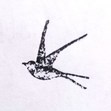Environments
Of the ‘big three’ elements of any story – character, plot and setting – I’ve always thought character to be the most important. A really good character can be dropped in any setting and sort of make themselves a plot just by interacting with the world. But that, of course, requires there to be an interesting world for them to interact with. (And for the plot they create to be well-realised and written, but I want to talk about setting and environment today.)
Now in fantasy and sci-fi – in which I write – the temptation is of course to go crazy, and create environments and settings that are very different to our own. Like, I don’t know, making the seas hot, or building megacities in craters on the Moon. Or (in unfinished and unreleased things) having all life on a world exist in one temperate valley, on asteroids with artificial oxygen, or a hundred other things. But while creating these grandiose environments is a lot of fun, which is why I keep doing it, lately I’ve been trying to remind myself that while they might be fantastical, they also have to be believable. Which means steering away from the epic descriptions, and making sure I’m including the little things that make unbelievable worlds seem real.
I am always carrying at least one notebook for random ideas and the like. This summer I started a fresh one, however, specifically for environmental notes. Drawings of interesting – or ordinary – buildings, stretches of waterfront, fields. Notes on what the air feels like, what the ambient sounds are. I’m only just beginning the notes, but I went to Spain a couple of times this summer and recorded quite a few cool things there, and as I write this I’m at my parents’ home in Herefordshire. Spending so much time in the city I tend to forget just how different and pleasant the countryside can be. The lack of noise is probably the biggest and nicest thing. There’s no background hum of traffic, no horns, no sirens. There’s just birdsong and the church bells.
These are the little details that are so important to creating a good, believable setting when writing. They’re the little details I’m trying to use more often. It’s all well and good writing about a fantasy city’s soaring buildings and grand boulevards, but what does it sound like? What does it smell like? When your characters quest forth into the countryside, they’re going to notice the quiet, yes, but also the cold, as they leave the insulating blanket of all those buildings. They’ll be able to see the stars at night too. When I’m writing about a port, I need to know what harbours actually look like, what kind of businesses and shops make their homes along the waterfront. I need to know what waterfronts actually look like too. (The wharf I describe in ‘The Vigil of Talos’ is actually based on the beachfront in the very Spanish town I stayed in the other week.) I need to write about the smell of salt and seafood as well as the sight of the grand battleships hoving into port.
Try it for yourself. Pull your focus back and really look at your surroundings. Find the small things. Remember them. Describe them. Add them to your writing. They are the seasoning that will make a bland dish delicious.



